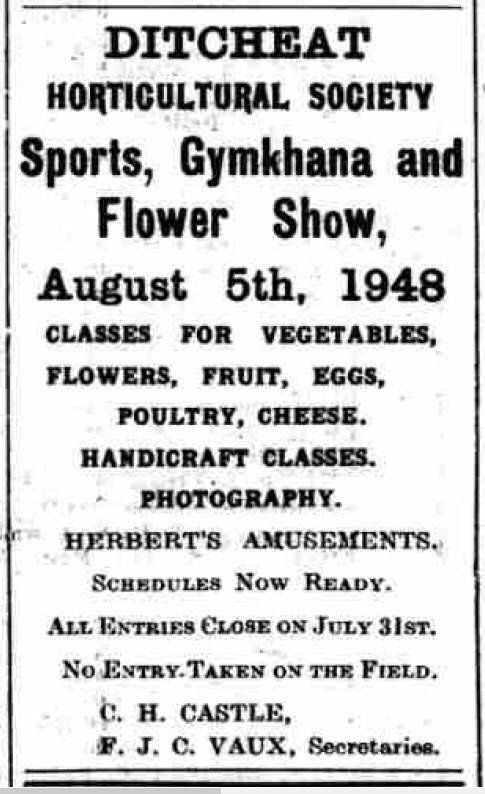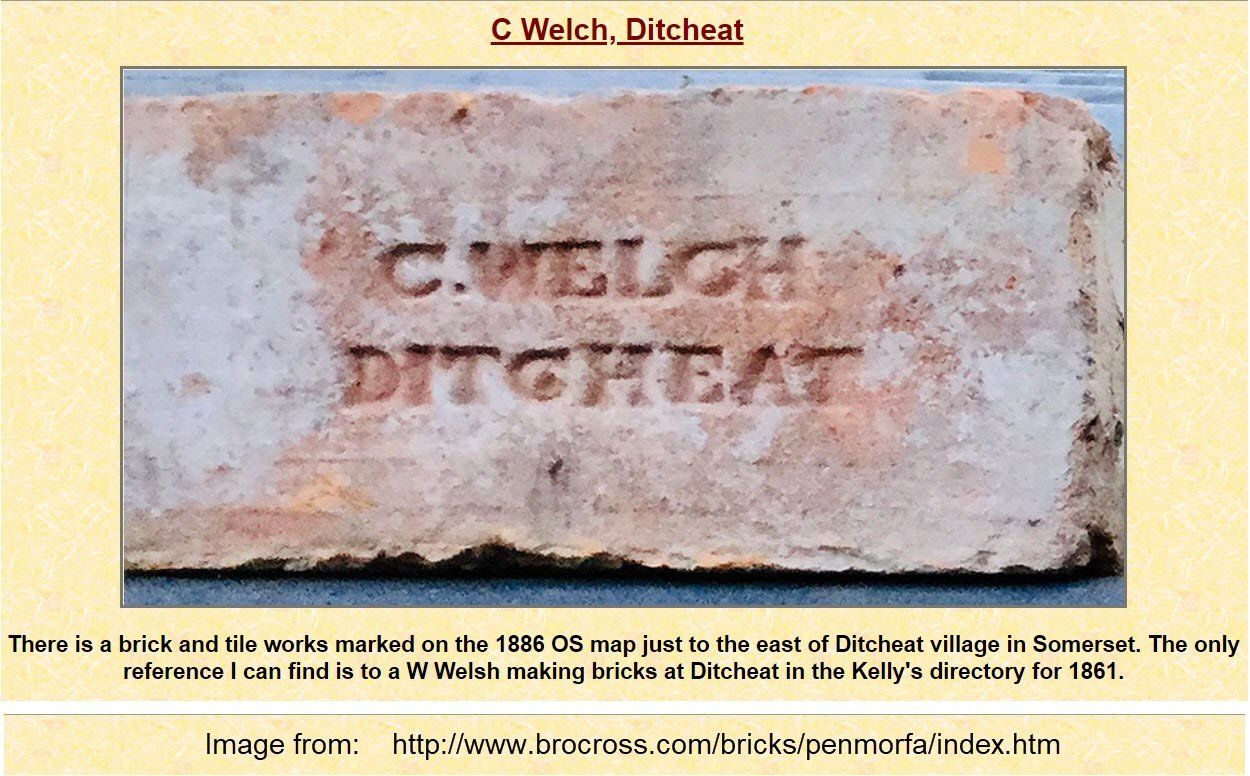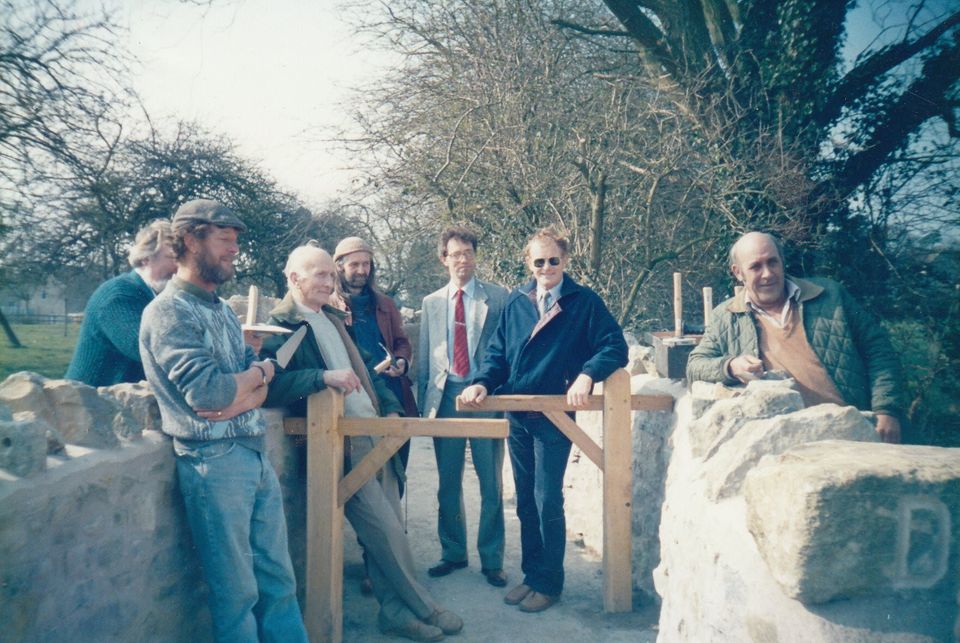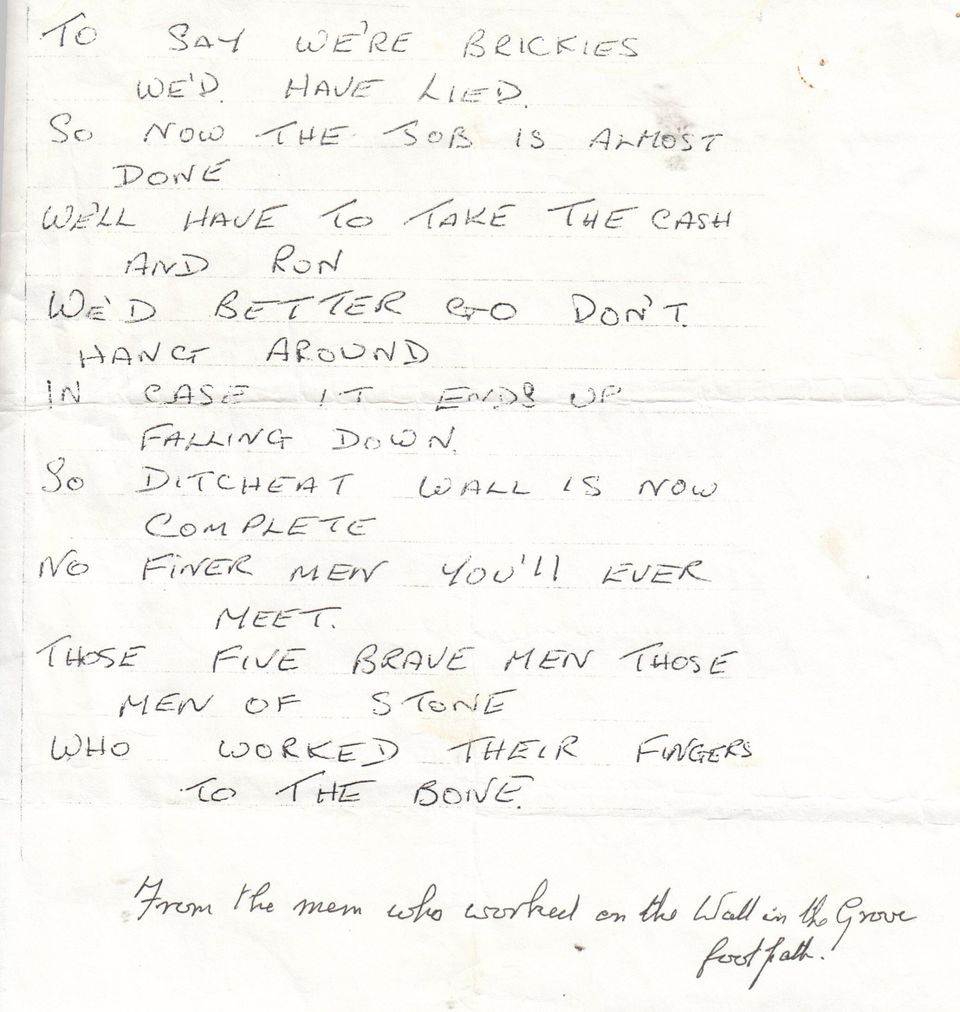Grove Footpath
Roger Yeoman • 14 February 2021
The Grove footpath wall rebuilt 1992
A few people will remember the dilapidated wall along the Grove footpath pre 1992, when you could just step over a pile of stones into the orchard. It was not economical to repair as far as the agricultural use would justify and the ownership was questionable, a problem that was often raised at Parish Council.
One day when Norris Yeoman was cleaning along the path surface and edges a car pulled up at the end and this chance meeting led to the wall being rebuilt. The gentleman was a representative of Bovis and was looking for projects to put forward for the government's Employment Action scheme, where unemployed people would volunteer minimum of 32¼ hours per week and receive £10 per week over and above their DSS benefits.
A scheme was approved and the Parish Funded the materials with contribution from the farmer, Earnest Dyke. A large van body was purchased and used as a site store and cabin. There was a set back when the men's tools were stolen from the lock up store. The next night the hired mixer was also stolen. A villager loaned his mixer, more tools were forthcoming and within a few days
£365 was collected in the village to replace the original tools.
Norris Yeoman is pictured here with the scheme facilitator and Ben Look, Parish Council chairman, along with the four of the volunteers, whose efforts are greatly appreciated by the villagers. The new oak footpath barriers were generously made by Dave Burfitt
A final poem from the builders, Derek Evangelista, David Chayter, Ted Welch, Colin Foot & Graham Jefferies.

News paper report of the 1948 Show This blog post is prompted by my visit to the 135th Hawkesbury Horticultural Society Show in South Gloucester, it is believed to be one of the longest continuously running Horticultural Shows in England. From its start in 1885, to the 134th Show in the summer of 2019, it had been held every year without a break. The Ditcheat Show folded in the early 60's . This report is of a show that I cannot remember, being not quite 1 year old. However, I do recall many of the shows in my childhood and competed in the children's section.

This post was prompted by a response to this website from Denise Graham, she wrote "Both my husband & myself worked for John Wainwrights over at Stoke St Michael, Many years ago a large brass 'nut' was found (for the wheel of a horse drawn stone waggon). It is stamped with "Ditcheat Waggon Works Shepton Mallet(t). ? Padfield & Son(s). It has been 'persuaded' on and off with a chisel, so some letters are unclear. Would you know any history of Padfields Waggon works? " During my childhood the business in the centre of Ditcheat was run by Mitchell & Hill Builders & Undertaker, wheelwrights, smithy and wagon building had stopped. Although I remember the Tyring Platform present in the yard. The first record I found from the newspaper archives dated January 1890 is of William Hodges advertising for a blacksmith.

The quarry was in existence since from about 1870 and was generally described as producing “Blue Lias Lime and Selenitic Cement”, but in Kelly’s Directory of 1902, it also claims Portland cement. The opening of the quarry quickly followed the completion of the Burnham to Evercreech section of the Somerset & Dorset Railway in 1862 During the next 40 years the quarry was operated by a number of owners, this page reproduces advertisements and newspaper reports of events and court cases. It is interesting reading and is an insight to the industrial heritage in Pylle and the local area. The newspaper reports were researched from www.britishnewspaperarchive.co.uk with additional information from www.cementkilns.co.uk/cement_kiln_pylle.html Maps are found at The National Library of Scotland which has more editions of OS maps including the First Edition maps from 1884, use this link ,

Examples of Ditcheat bricks stamped "C Welch" can be found in a number of walls around the village. The location of the brick works is shown on an 1884 map available at https://maps.nls.uk/view/106022273 The works are missing in the 1928 revision https://maps.nls.uk/view/101461624 The area worked covered the whole of the site now occupied by the houses on the east side of Folly Drive. Clay was excavated to the level of the rear gardens right up to the front gate of the present houses. The houses are build on made up ground, mostly with the surplus trench spoil arising from the installation of mains drainage in the village around 1958.

Shepton Mallet Journal - Friday 05 February 1926 Image © Reach PLC. Image created courtesy of THE BRITISH LIBRARY BOARD. DITCHEAT. Farewell Gathering. —A very pleasant evening was spent at the Green tree Inn,” on Friday last, on the occasion the departure of the Post Office Linesmen, who have, for this last three months, been residing in the village during the installation new lines. Mr. George Merrifield, speaking for the villagers, said that the company the linesmen would be greatly missed, and that if they should happen to return to the district at some, future date, they might be sure of very hearty welcome. Mr. Bert Lockyer, replying on behalf the linesmen, spoke highly of Ditcheat hospitality, and .said that they would always live in the hope of returning to the village, if only for short stay. The Ditcheat Jazz Band, which was in attendance during the evening, and rendered excellent music, was ably led Mr. Herbert Mintern.

The home of Florrie & Arthur Richards (Florrie was Norris Yeoman's elder sister) Mrs Richards was known to many as the lunch time supervisor at Ditcheat School. Arthur was a signalman at Evercreech Junction South at the time of the closure, he then was painter and decorator for Mitchell & Hill the village builders.



